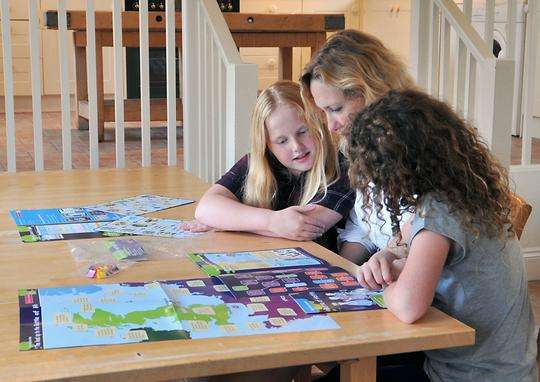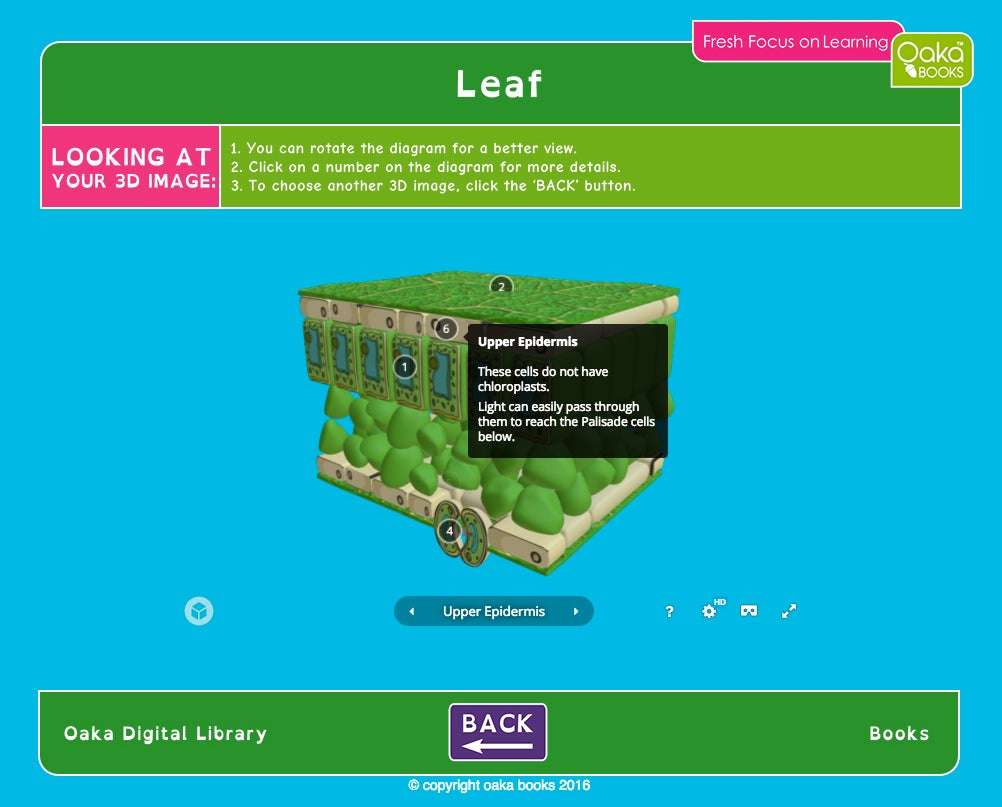Listen to the Podcast
We are excited to offer you the ability to listen to Dr Susie’s Multisensory Walks directly on our site. Click the play button below to start your journey with Dr Susie:
Podcast Transcription
Dr. Susie Nyman:
Hello and welcome to Dr. Susie Nyman’s Multisensory Walks. I’m Dr. Susie Nyman, your guide on this journey to explore the power of multisensory learning. In each episode, we’ll be taking a stroll through different environments, sharing practical strategies and insights to help you turn everyday outings into enriching educational experiences for children with diverse learning needs.
Whether you’re a parent or a teacher, join us as we discover how to make learning engaging, inclusive, and fun. Let’s embark on this adventure together. Hello, ladies and gentlemen! We’re at Wisley Gardens today. I’m Dr. Susie Nyman from the Sixth Form College, and I’m joined by Suzie from The Conservation Volunteers. Do you want to say hello, Suzie?
Suzie:
Hello, Susie!
Dr. Susie Nyman:
We’re going to walk through the landscape and end up in the bird hide. Oh, look at the colors!
Suzie:
Beautiful colors, beautiful purple hues.
Dr. Susie Nyman:
As we walk through, you can see some lovely grasses as well. These flowers are quite interesting. This is a statice—it’s an everlasting flower.
Suzie:
Yes.
Dr. Susie Nyman:
This can be cut, dried, and used forever. It was also used for strewing as well.
Suzie:
Yes.
Dr. Susie Nyman:
There’s one little thing that’s concerning me. Immediately upon walking in here, I noticed the lack of bees. There has been a noticeable absence of pollinators this summer.
Suzie:
I didn’t read about that.
Dr. Susie Nyman:
We have to look after the little things. Building even a tiny insect hide, like a small haystack in your garden, really improves the chances of insects thriving. Without them, these flowers—and our fruits and vegetables—won’t get pollinated. It’s really important. But the rainbow colors we’re seeing here—oh, there’s our native hornet.
Suzie:
Oh wow, yes! Did you see it?
Dr. Susie Nyman:
It’s huge, but still a pollinator. I usually only see purple statice flowers, but here you’ve got white, light purple, dark purple, and a pinkish color.
Suzie:
Yellow, too.
Dr. Susie Nyman:
You’ve got purple with a white bit in the middle, the same with the pink. Over there, that cluster looks like a bunch of funny eyes looking at us, with the purple and white mixed together. And underneath, we have some lovely calluna, or heather, alongside erica, another form of heather. They look like little bells, don’t they?
Suzie:
Yeah, they do. There’s bell heather and calluna, and they really flourish after being burnt back.
Dr. Susie Nyman:
Did you know that? It’s interesting, isn’t it? Here, they’re absolutely taken care of. The right soil conditions, the right temperature, the correct light—everything is perfect. Look at this deep magenta color.
Suzie:
Yes, these are bells as well, aren’t they? This is Erica’s canaria, how do you say that?
Dr. Susie Nyman:
Yes, canaria. Oh, here’s Calluna vulgaris—this one is white. Beautiful! See how this one’s so feathery at the ends of the flowers? It almost looks feathery compared to the erica next door, which is very bell-like.
Suzie:
Yes, that’s Erica canaria, Eden Valley. Here’s a nice pink one—Erica canaria ‘F. oreofolia,’ Summer Gold. Beautiful pink, and this is a lilac.
Dr. Susie Nyman:
Calluna vulgaris, all set off by these beautiful tall grasses at the back—some of them are six feet tall.
Suzie:
They are!
Dr. Susie Nyman:
Most ericas and heathers are quite low-growing, although they can get quite big. They’re beautifully set against that background—it’s amazing. What beautiful landscaping! A feast for the eyes. Oh, there’s a different statice over here—look at those enormous flower heads!
Suzie:
Yes, they’re much bigger, aren’t they?
Dr. Susie Nyman:
There are also some strawflowers here, just a few, but they’re also everlasting flowers. They can be cut and dried, hung upside down, and they’ll keep their color all winter. In the spring, they can be returned to nature to decompose and feed other plants. This is the continuity of the life cycle of plants. Apart from Wisley Gardens, I saw heather at Caesar’s Camp in Aldershot. Beautiful! Is there heather near Frensham?
Suzie:
I believe so, and Yateley Common. Most of the commons, because of the soil and landscape, have heather on them. Unfortunately, we sometimes get wildfires caused by people having barbecues or setting fires, which isn’t a natural way to introduce fire. Fire would happen naturally, and the rangers of those commons manage them with knowledge and safety protocols in place.
Dr. Susie Nyman:
Yes, what’s this? I’ve never seen this one—it’s really spindly. It’s called a needle bush, and you can see why, can’t you?
Suzie:
Yes, the needles are very sharp. They do look like needles—you could probably dry that, stick a hole in one end, and sew with it.
Dr. Susie Nyman:
Yes, a lot of these names are steeped in folklore because people used to use them for practical purposes. Teasels, for example, were used as combs for hair.
Suzie:
Beautiful.
Dr. Susie Nyman:
Look at those wavy grasses ahead of us in the wind.
Suzie:
They’re beautiful, aren’t they?
Dr. Susie Nyman:
Almost like the seahorses you see when the waves are whipped up by the wind.
Suzie:
Absolutely divine.
Dr. Susie Nyman:
The first time we ever saw heather was on Pendle Hill with Auntie Olive. She used to take us up there to see the heather, and she’d say, “Let’s go and pick mulberries,” which were actually wild blueberries.
Suzie:
Yes, they’re the English wild blueberry, a heathland plant. You’ll often find all of these things mixed together. When you walk Caesar’s Camp, you’ll find strawflowers as well.
Dr. Susie Nyman:
Yes, they’re beautiful. Similar to strawflowers, they can be dried out—you can even hear the crackling, like straw. That’s why they’re called strawflowers. They sound and look like straw but are another type of everlasting flower. Caesar’s Camp has all of these things. It is a SPA, a Special Protection Area. We have the most heathland in Europe, and possibly the world, here in the UK, and we need to protect it and look after it. This is why there’s mitigation with suitable alternative green spaces to prevent too much foot traffic in these areas.
Suzie:
Yes, there are a lot of ground-nesting birds there.
Dr. Susie Nyman:
Oh, we were talking about teasels just now—look, here’s one.
Suzie:
Teasels are used for flower arranging and all sorts of crafts. The bigger ones used to be cut in half and attached to a stick to use as a comb.
Dr. Susie Nyman:
I remember as a child, people would make animals with them—the teasel would be the head of a mouse. You can also spray them with paint. I think this one here is Cirsium vulgare.
Suzie:
Yes, I think that’s Cirsium vulgare. It has such beautiful little flowers, and although much of it has gone to seed, there are still plenty of blooms. The texture is really knobbly—it’s fun to run your fingers over them, isn’t it? You can see the new flowers coming in among the seed heads, which is unusual.
Dr. Susie Nyman:
This looks like thrift, which you can find everywhere, and again, it dries beautifully. Oh, wow, what’s this one? I think it might be an Echinops—it looks like a Jurassic plant with its spiky leaves, almost unreal.
Suzie:
Yes, it’s very gray, isn’t it? But no, that’s the vine. I think that is an Echinops, but again, it sprays up beautifully and is quite an impactful structural plant for flower arranging.
Dr. Susie Nyman:
There are quite a few flower arranging plants in this section, and they last long if you dry them properly. Again, that’s a strawflower—can you hear that? It’s a different one from the bright yellow we saw earlier. There’s a white one with a vivid yellow center, but they come in all colors, including pinks and purples. This lot is beautifully set off by the dark green of this holly.
Suzie:
Yes, it’s an Ilex, isn’t it? It’s a holly without too many spiky bits.
Dr. Susie Nyman:
Which is amazing because normally the spiky bits are at the bottom, and the leaves change shape as they go up. The texture difference between that lovely glossy leaf and these lovely spikes of calluna and erica down here is really lovely, with the spikes of the strawflowers coming up in the middle and the statice coming through. And the little yuccas—I love how they’ve placed the yucca plants, all the different types, in between all of this. You’ve got all these textures, shapes, and sizes coming through.
Suzie:
Such fun to look at—it makes me feel quite light-hearted because it’s fun. There’s a lot of fun in this.
Dr. Susie Nyman:
Here we go, the heather landscape. To the delight of the bees and gardeners, there’s a flowering heather for every season. It’s a useful food source for insects all year, especially during the challenging winter months. Look among the changing ribbons of color and texture for bumblebees, solitary bees, butterflies, and other flies foraging here. Honeybees from our nearby apiary will be frequent visitors too—they’re all great pollinators for this collection. Look, there’s the beehive!
Suzie:
Oh yes, there we go.
Dr. Susie Nyman:
As we walk around here to the left, we’re going to enter the bird hide. Splendid! See over here? Oh, that’s beautiful. The hexagon is actually one of the strongest shapes and uses space most efficiently, which is why people have started using hexagonal shapes for shelters in refugee camps. I’m just going to take Suzie off the path because there’s a plant here that she loves—my friend calls them the lollipop plant. It is Verbena bonariensis. There we go, a great structural plant for gardens where space is limited. It will rise above everything else with these wonderful open panicles of flowers.
Suzie:
They’re about five to six feet tall—taller than me, and I’m five foot four like you.
Dr. Susie Nyman:
I didn’t realize we were the same height—five foot four and a bit, I was! There we go. Look at these as well—these are wonderful to rise up through there. Is it a flowering grass?
Suzie:
Yes, the lovely contrast of the deep magentas and purples. What’s that one called? It is Miscanthus sinensis ‘Ferner Osten,’ with the wonderful contrast of the variegated leaf and the burgundy—would you call that burgundy?—flowering head. Beautiful.
Dr. Susie Nyman:
You can make these little changes in your garden that don’t cost much and don’t require a lot of maintenance. In plants, you have monocotyledons and dicotyledons. Monocotyledons have parallel-veined leaves, and this is a nice example of a monocotyledon with that parallel-veined leaf. Now, this is Pennisetum alopecuroides ‘Redhead’—it looks like a toilet brush.
Suzie:
Yes, it looks like a bottle brush.
Dr. Susie Nyman:
Yes, bottle brush, toilet brush—they all look fun, don’t they? They’re all saying, “I’m here, I’m just going to have fun!”
Suzie:
Cabbage white—is it a cabbage white? I didn’t know until last year that there’s a white admiral.
Dr. Susie Nyman:
I didn’t know that either, but it’s now my challenge to find one in the next year or so. This lovely, very soft, gentle leaf—this is a verbascum. Oh wow, they are very large, about 30 centimeters long. Some of the flowering heads can reach six or seven feet easily, and they manage well in dry conditions without much care. They also thrive in seaside conditions too.
Suzie:
More of this bottle brush—here we go, hexagons. If you look closely, you can see how much space would be wasted if bees built their honeycombs out of circles rather than hexagons. To fill the gaps between the circles, bees would need to use precious wax unnecessarily. Bees use hexagons because it provides more storage space than any other shape using the least amount of beeswax. Wax takes a lot of energy, food, and time for bees to make, so maximum storage for minimum effort is crucial.
Dr. Susie Nyman:
That goes back to your hexagon theory earlier. We’re just coming around the corner—oh, sorry, we have to stop for a minute. This looks like Jerusalem artichoke.
Suzie:
I was going to say it does, yeah—a fine specimen, madam! A fine specimen of a Jerusalem artichoke.
Dr. Susie Nyman:
Nice bit of lavender here—lavender is great. So relaxing, and like the rosemary we were talking about earlier, a really strong volatile oil that deters nasty insects. Little parasitic insects would rather go somewhere else if you have lavender strewn or even just a lavender bag in the corner of a room.
Suzie:
Here we have the bird hide, and we can hear the sounds of birds. There’s a machine here that you can wind round, and eventually, you’ll keep turning, and you’ll hear something.
Dr. Susie Nyman:
Robins have bright red chests, which matches their cheery song. There we go. So, we’re going to go inside now. Oh, the sound is there—okay, let’s go inside, Suzie. Suzie has got the bird identification chart—wonderful, one from Wild ID.
Suzie:
So that’s a hop climbing up over an elder and going into the willow, which gives the birds loads of different types of food and protection from predators—not that I think there’ll be many here.
Dr. Susie Nyman:
Definitely a challenge, but now that I’ve seen it and looked at the chart, I can visually confirm it without knowing much about birds. This elder has beautiful berries on it—more food for the birds. Oh, this is lovely, Suzie—look at that tree over there. It just looks like an elephant’s leg—the bark is beautiful.
Suzie:
Yes, and we can see lots of ferns, right?
Dr. Susie Nyman:
Yes, that’s a fern—Dryopteris filix-mas, the male fern. This pink flower right in front of us, as beautiful as it is and packed full of nectar, is a bit of a naughty one.
Suzie:
Oh, that’s Himalayan balsam, and it has exploding seed capsules, so it can actually transfer itself upstream.
Dr. Susie Nyman:
Wow, so where we’ve got the canal that runs through Wellesley, we do balsam pulling because it will take over, and our native plants can’t grow. As you can see, it’s quite a triffid, isn’t it?
Suzie:
It is, but it is beautiful.
Dr. Susie Nyman:
I think the native name for it used to be called policeman’s helmet because of the shape of the flowers.
Suzie:
Wow, over here, on the wall, you’ve got the bird eggs in order. I struggle with this—so you’ve got the smallest one, there’s the blue tit, then the wren, then the coal tit, chiffchaff, great tit, treecreeper, nuthatch, grey wagtail, then the house sparrow, goldfinch, kingfisher, pied wagtail, robin, chaffinch—that’s about two centimeters, would you say? Swallow, cuckoo—two and a half centimeters—swift, bigger again, and then the great spotted woodpecker. The shapes are similar, but they all have their differences, don’t they?
Dr. Susie Nyman:
I struggle with eggs because of the damage done by egg collectors over the years. But people don’t do it now—they know better. We need the eggs on the nest so they can hatch and become adults. There are so many Victorian collections of these, which devastated the bird world, but we don’t do it anymore, which is good. Education—we’ve learned. You’ve got some lovely information boards here on the blue tit. You see quite a few of those here. Look at how beautiful that nest is—this is how they make them inside their little houses. We’ve got the great tit here, and the robin, the swift, and the house sparrow. I think we’ll go outside—it’s quite noisy in here.
Suzie:
Oh, hang on a minute, Susie—what do we see? A chaffinch?
Dr. Susie Nyman:
Yes, let’s put that on today’s list. I’m going to write ‘chaffinch’ on the board. There we go.
Suzie:
Excellent, the board also has silhouettes of birds—sometimes you only get to see a silhouette against the skyline.
Dr. Susie Nyman:
Yes, we used to see a lot of red kites in Oxfordshire. You always knew it was them because you’d see that distinctive V-shape in the tail. Yes, there’s Verbena again.
Suzie:
Wow, Susie, that was amazing in the bird hide! Those children were just loving learning about the birds and watching them. It’s such a fantastic place to come, just to be close to nature, and see it, and have that information directly at hand too. Then you could take that information home with you.
Dr. Susie Nyman:
I’d never noticed there were little boxes on the wall with birds’ nests in them—that was really nice, and to see little eggs in there too. And we didn’t see any of those parakeets today. Every other time I’ve come here, we’ve seen the parakeets—you can usually hear them before you see them. There’s some honesty—I’ve never noticed that before. The seed heads are amazing. Just have a little bit of honesty growing in your garden—it feeds a lot of pollinators, not just bees, but other pollinators too.
Suzie:
Where was the beehive? We saw the beehive back there—there’s one now, that shape there on your left.
Dr. Susie Nyman:
Oh, that shape is called a WBC—it’s named after the person who came up with it. It’s actually an outer casing, and the hive is inside that, so it provides double insulation. The bees will love being in the middle of this heather landscape—they’ll have forage all year round. If people are interested, most local beekeeping groups will have out-apiary days where anyone can go along, get a lesson in beekeeping, put on a suit, and get into the hive. There’s nothing like getting up close to a hive, hearing the sound of the hive at work, and experiencing the smell when you take the lid off. There are no words in my vocabulary to describe the smell and sound of a hive.
Suzie:
Didn’t you keep bees years ago?
Dr. Susie Nyman:
Yes, I am still a beekeeper, although I don’t have bees at the moment. This is still a live hive by the look of it. Honeybees aren’t the only pollinators we need to look after—solitary bees are really important too. They make tiny, perfectly round holes in the ground, depending on the type of bee. These holes can be as tiny as one or two millimeters in diameter or up to half a centimeter. Just watching them is incredible—you have to be patient, but it’s worth it.
Suzie:
Susie, we’ve had a wonderful morning in the heather landscape, looking at all the different colored heathers and statice, lots of different grasses, and then we walked to the bird hide and watched birds like chaffinches and great tits. We looked in little boxes and saw the birds’ nests—we’ve had a really good day. At the end, we even got out the stethoscope and tried to listen to the transpiration in the trees. However, it’s not a very warm day, so I think next time, we’ll come on a hotter day, bring the stethoscope, and see if we can hear the transpiration of the water moving through the trees.
Dr. Susie Nyman:
Thank you very much, Suzie, for coming with me today. I hope you enjoyed yourself.
Suzie:
Absolutely loved it—thank you, Susie, for inviting me.
Dr. Susie Nyman:
It’s a pleasure, and I look forward to the next podcast, which may be near Aldershot or Farnborough—maybe Chalk Farm Lake, we’ll see. Exciting!
Suzie:
Yes, thank you. Bye!
Dr. Susie Nyman:
Thank you for listening to this episode of Dr. Susie Nyman’s Multisensory Walks. I hope you found today’s discussion insightful and inspiring. Remember, every walk is an opportunity to learn and grow. If you enjoyed this episode, please hit the subscribe button, share it with fellow parents and teachers, and leave us a review on Spotify, Apple Podcasts, or wherever you listen to your podcasts.
We’d love to hear your thoughts and experiences. Reach out to us on social media or email us at [email protected]. Stay curious, stay proactive, and let’s continue to create fun, multisensory learning adventures together. Until next time, happy walking!
This episode of Dr. Susie’s Multisensory Walks was produced and recorded by Oaka Books. I’m your host, Dr. Susie Nyman—thank you for listening, and have a lovely day.





